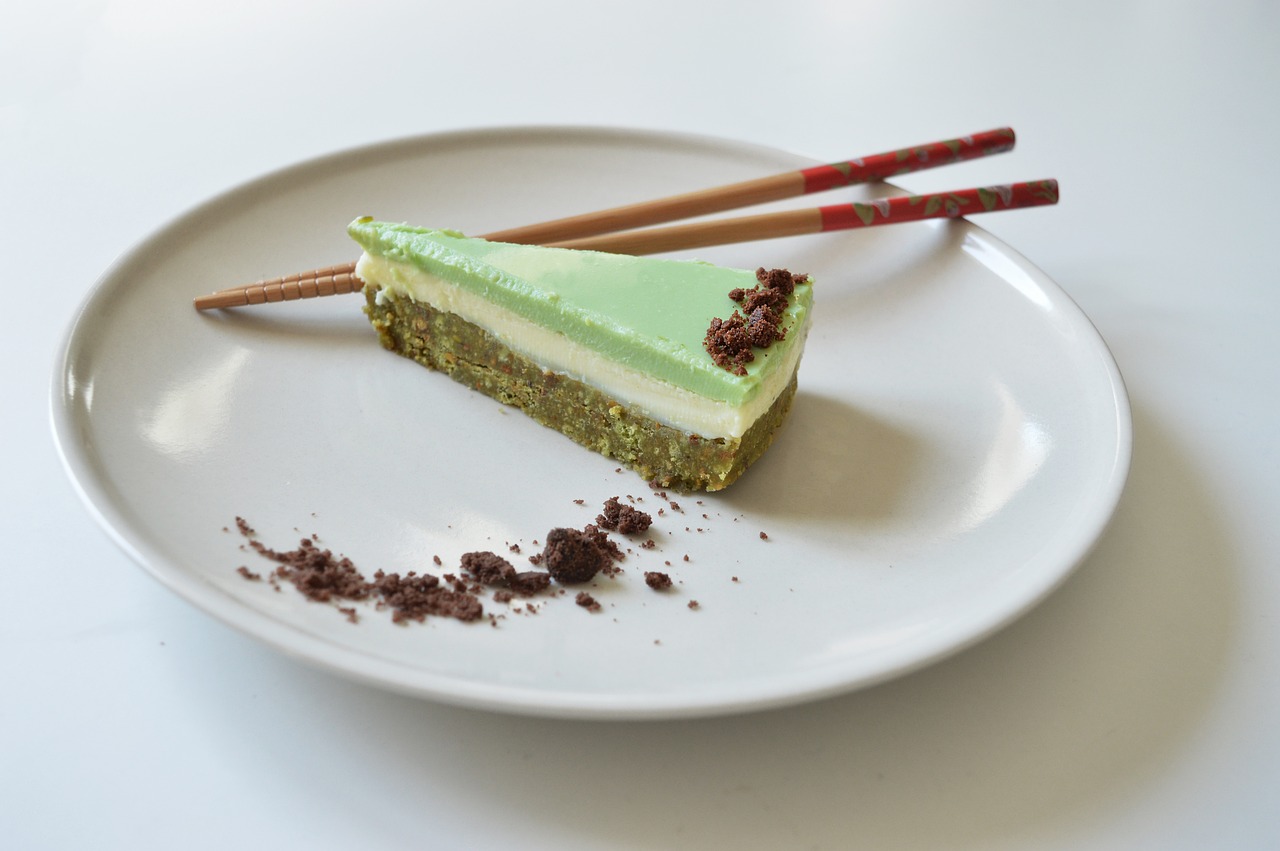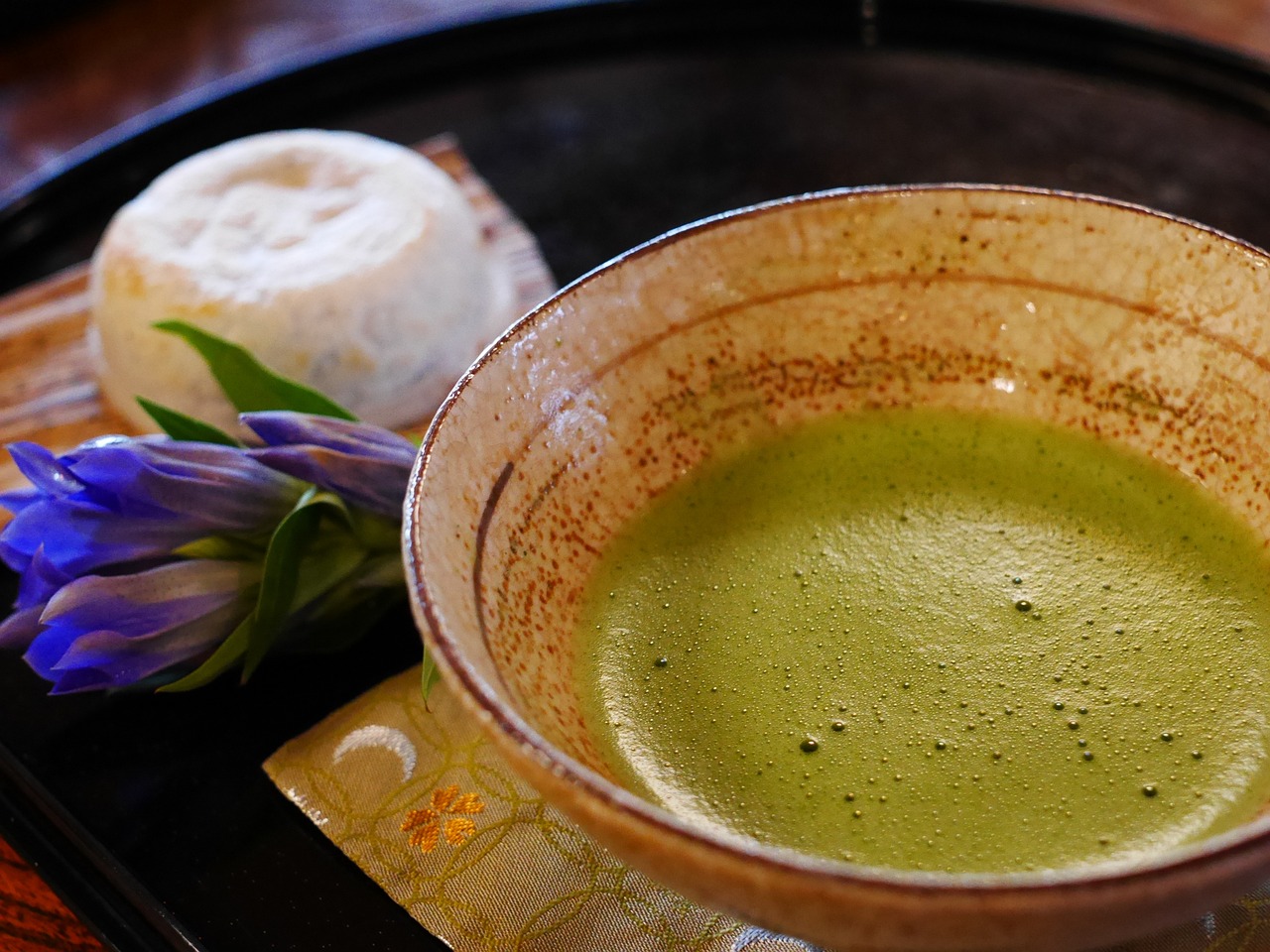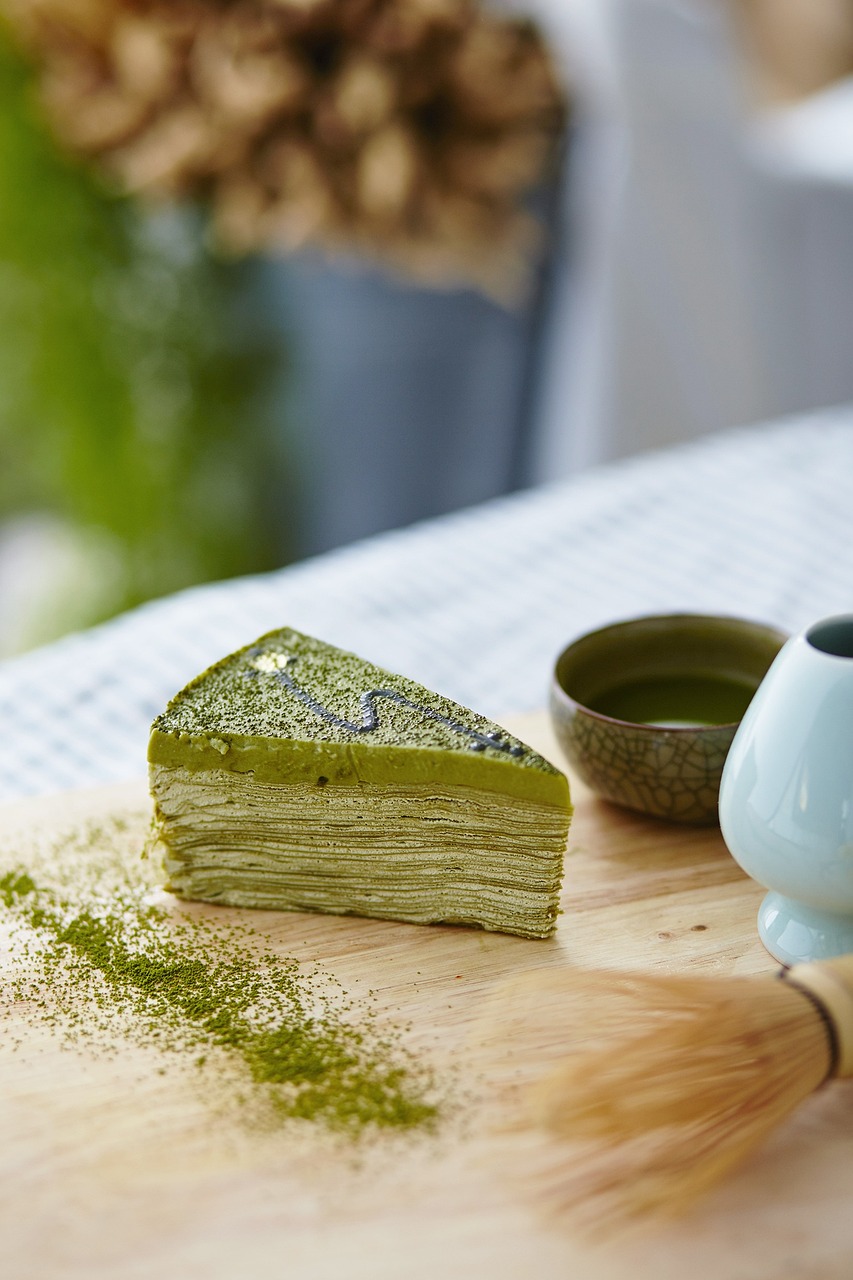Matcha Madness: Unveiling The Secrets Of Japan’s Finest Green Tea Powder
If you’ve ever wondered why Matcha is all the rage these days, look no further! In this article, we’re taking you on a journey to uncover the secrets behind Japan’s finest green tea powder. From its rich history to its unique cultivation process, we’ll explore the captivating world of Matcha and reveal why it has become a beloved beverage worldwide. So grab a cup of tea (preferably Matcha!) and let’s dive into the fascinating world of Matcha Madness!

History of Matcha
Matcha, a vibrant green tea powder known for its unique taste and numerous health benefits, has a rich history that dates back to ancient China. The origins of matcha can be traced back to the Tang Dynasty in China, where tea was first grown, processed, and consumed. It was during this time that the practice of grinding tea leaves into a fine powder began.
Origins in China
Tea cultivation in China can be traced back over 4,000 years, making it one of the oldest known beverages in the world. In ancient China, tea was primarily consumed for its medicinal properties and was highly valued for its ability to promote health and longevity. The production of powdered tea began during the Tang Dynasty (618-907), where leaves were plucked, steamed, dried, and ground into a fine powder. This powdered form of tea, known as “lu cha” or “whisked tea,” was popular among Buddhist monks and the aristocracy.
Introduction to Japan
The introduction of matcha to Japan can be attributed to a Japanese Buddhist monk named Eisai. In the 12th century, Eisai traveled to China to study Buddhism and brought back with him not only Buddhist teachings but also the practice of consuming powdered tea. Upon his return to Japan, Eisai planted tea seeds in Kyoto’s temple gardens, thus initiating the cultivation of tea in Japan.
Zen Buddhism and Matcha
It was during the Kamakura period (1185-1333) that matcha became closely associated with Zen Buddhism. Zen monks found the powdered tea’s ability to promote focus, calmness, and clarity of mind to be deeply beneficial for their meditation practices. They began incorporating matcha into their daily rituals, eventually developing the elaborate tea ceremony known as “chanoyu” or “the way of tea.” This connection between matcha and Zen Buddhism further solidified the cultural significance of matcha in Japan.
Industrialization of Matcha
The industrialization of matcha began in the 18th century, with the invention of steam-powered rolling mills that made tea processing more efficient. This technological advancement allowed for larger-scale production of matcha, making it more accessible to the general population. The mass production of matcha led to its popularity spreading beyond the confines of Buddhist temples and into the homes of ordinary Japanese people. Today, Japan is the primary producer and exporter of matcha worldwide.
Cultivation of Matcha
The cultivation of matcha requires careful attention to detail and specific growing conditions to ensure the tea leaves achieve the desired flavor, color, and texture.
Shade-Grown Tea Plants
One of the key factors in the cultivation of matcha is the shading process. About three weeks before harvest, tea plants are covered with shade cloths or bamboo screens to block out direct sunlight. This technique, known as “tana,” stimulates the production of chlorophyll in the leaves and enhances the development of amino acids. The shade-grown plants produce tender and vibrant leaves that are rich in flavor and nutrition.
Harvesting and Processing
Once the tea leaves have reached the desired stage of growth, they are carefully handpicked. The youngest and most tender leaves are selected, as they contain the highest concentration of nutrients. After harvesting, the leaves undergo a meticulous process known as “tencha,” which involves steaming, drying, and sorting. This process ensures the preservation of the leaves’ vibrant green color and delicate flavors.
Stone Grinding Technique
The final step in the production of matcha involves the traditional stone grinding technique. The dried tea leaves are ground into a fine powder using granite grinding wheels, which can take several hours to produce just a small amount of matcha. This slow and precise method creates a powder with a smooth texture and a vibrant green color.

The Different Grades of Matcha
Matcha is available in various grades, each offering a slightly different flavor profile and intended use.
Ceremonial Grade Matcha
Ceremonial grade matcha, also known as “koicha,” is the highest quality grade of matcha available. It is made from the youngest leaves that have been shaded for an extended period and handpicked with great care. Ceremonial grade matcha is characterized by its vibrant green color, rich umami flavor, and smooth texture. It is traditionally used in Japanese tea ceremonies and is best enjoyed on its own, whisked with hot water.
Premium Grade Matcha
Premium grade matcha, also known as “usucha,” is a slightly lower grade than ceremonial grade matcha. It is made from the leaves of older tea plants and is generally less sweet and milder in flavor compared to ceremonial grade matcha. Premium grade matcha is still suitable for drinking on its own, but is also commonly used in culinary applications such as baking and making matcha lattes.
Culinary Grade Matcha
Culinary grade matcha, sometimes referred to as “ingredient grade” matcha, is the most affordable and widely available grade. It is made from coarser leaves and has a stronger, more bitter flavor compared to the higher grades. Culinary grade matcha is primarily used in cooking and baking, where its unique flavor and vibrant green color can enhance a wide range of dishes, from smoothies to desserts.
Health Benefits of Matcha
In addition to its distinct flavor and versatility in culinary applications, matcha offers a variety of health benefits that have contributed to its growing popularity.
High in Antioxidants
Matcha is renowned for being rich in antioxidants, which are natural compounds that help protect the body against free radicals and oxidative stress. The high concentration of antioxidants in matcha is due to the shading process and the consumption of the entire tea leaf. Matcha contains catechins, a specific type of antioxidant that is known to have potent health-promoting properties.
Boosts Metabolism and Energy
Matcha contains a unique combination of caffeine and L-theanine, an amino acid that promotes a calm and focused state of mind. This balanced combination provides a natural and sustained energy boost without the jittery side effects often associated with coffee and other caffeinated beverages. The caffeine in matcha stimulates the metabolism, promoting fat burning and weight loss.
Enhances Calmness and Mental Focus
The L-theanine in matcha has been shown to promote relaxation and reduce anxiety. It induces a state of calmness and mental clarity without causing drowsiness. This unique property of matcha makes it an ideal choice for those seeking a natural way to manage stress and improve cognitive function.
Detoxifies the Body
Matcha is known for its detoxifying properties, primarily due to its high chlorophyll content. Chlorophyll is a natural pigment found in plants that helps remove toxins and heavy metals from the body. Regular consumption of matcha can support the body’s natural detoxification processes and promote overall well-being.

Traditional Japanese Tea Ceremonies
Tea ceremonies, also known as “chanoyu” or “sado,” are an integral part of Japanese culture and have been practiced for centuries. The tea ceremony is a ritualized event that involves the preparation and serving of matcha in a formal setting.
Origins of the Tea Ceremony
The tea ceremony has its roots in Zen Buddhism and was initially introduced to Japan by Buddhist monks. It became a way for Zen practitioners to cultivate mindfulness, discipline, and an appreciation for the present moment. Over time, tea ceremonies evolved into a form of social gathering that emphasized harmony, respect, and tranquility.
Importance of Matcha in the Ceremony
Matcha holds great significance in the tea ceremony, as it is the focal point of the entire event. The preparation and consumption of matcha are considered acts of mindfulness and meditation, promoting a sense of inner peace and stillness. The unique flavor and vibrant green color of matcha contribute to the aesthetic beauty of the tea ceremony, creating a multisensory experience for participants.
Etiquette and Rituals
The tea ceremony is governed by a set of strict rules and etiquette that have been passed down through generations. Participants must observe proper posture, wear appropriate attire, and follow specific movements and gestures. These rituals serve to create a sense of harmony and create a space for contemplation and quietude.
Modern Uses of Matcha
While matcha has deep cultural roots in Japan, its popularity has transcended traditional boundaries in recent years. Matcha is now being incorporated into a wide range of modern applications, including food, beverages, and skincare products.
Matcha in Food and Beverages
Matcha has become a popular ingredient in both sweet and savory dishes. It is used in baking, where it adds a unique flavor and vibrant green color to cakes, cookies, and pastries. Matcha is also commonly used in beverages, such as lattes, smoothies, and cocktails. Its versatility and distinct flavor make it a favorite among chefs and home cooks alike.
Matcha in Cosmetics and Skincare
The antioxidant-rich properties of matcha make it a sought-after ingredient in natural skincare products. Matcha-infused creams, serums, and masks are believed to help combat signs of aging, reduce inflammation, and promote healthy skin. The high concentration of chlorophyll in matcha is also thought to purify and detoxify the skin, leaving it refreshed and rejuvenated.
Matcha in Healthy Recipes
Matcha has gained popularity among health-conscious individuals due to its numerous health benefits and versatility in cooking. It can be incorporated into a variety of healthy recipes, including smoothie bowls, overnight oats, and salad dressings. The earthy and slightly bitter flavor of matcha adds depth and complexity to these dishes while providing a nutritional boost.
Finding Authentic Matcha
With the growing popularity of matcha, it is essential to distinguish between authentic, high-quality matcha and inferior products that may be marketed as matcha but lack its distinctive characteristics.
Understanding Tea Labels
When purchasing matcha, it is crucial to read and understand the tea labels. Look for terms such as “ceremonial grade” or “premium grade” to ensure that you are buying a high-quality product. Avoid matcha labeled as “culinary grade” if you are looking for a more refined and delicate flavor profile.
Sourcing Matcha from Japan
To ensure authenticity, it is best to source matcha directly from Japan. Japan has strict quality control regulations in place, ensuring that the matcha produced and exported from the country maintains its high standard. Look for matcha grown in regions known for their tea production, such as Uji, Nishio, and Shizuoka.
Avoiding Counterfeit Products
Be wary of counterfeit matcha products that may contain fillers or low-quality green tea powder. Genuine matcha should have a vibrant green color, a smooth texture, and a distinct umami flavor. It is always a good idea to purchase matcha from reputable sources and read customer reviews to ensure the product’s authenticity.
Preparing and Enjoying Matcha
Preparing and enjoying matcha is a ritual in itself. By following the correct techniques and serving suggestions, you can fully appreciate the unique flavors and sensory experience that matcha offers.
Traditional Matcha Preparation
To prepare matcha in the traditional manner, you will need a bamboo whisk, a tea bowl, a tea scoop, and hot water. Begin by sifting the matcha powder into the bowl to remove any lumps. Next, add hot water (not boiling) and whisk vigorously in a back-and-forth motion until the matcha is frothy and well combined. Once the matcha is fully whisked, it is ready to be enjoyed.
Alternative Methods
If you don’t have the traditional matcha utensils, there are alternative methods for preparing matcha. One popular method is to use a small handheld electric frother or a portable electric whisk to mix the matcha with hot or cold water. Another option is to add matcha to smoothies, desserts, or even homemade ice cream for a vibrant green color and a unique flavor.
Serving Suggestions
Matcha can be enjoyed on its own, as it offers a distinct flavor profile. However, it is also commonly paired with traditional Japanese sweets, such as wagashi, to balance the bitterness of the tea. Matcha lattes, both hot and iced, have gained immense popularity and can be customized with your choice of milk and sweetener. Additionally, matcha can be used as a seasoning or garnish in various dishes, adding a touch of flavor and color.
The Global Matcha Trend
The consumption of matcha has experienced a significant surge in popularity in recent years, not only in Japan but also around the world. The global matcha trend can be attributed to its unique flavor, versatility, and its reputation as a superfood.
Growing Popularity Worldwide
Matcha has gained a devoted following outside of Japan, particularly in Western countries. Health-conscious individuals are drawn to matcha for its numerous health benefits and potential weight loss properties. Matcha’s vibrant green color and distinct flavor have also captivated the attention of food and beverage enthusiasts, who enjoy experimenting with its unique characteristics.
Matcha Cafes and Specialty Shops
The rise in popularity of matcha has led to the establishment of specialty matcha cafes and shops in major cities around the world. These establishments offer a wide range of matcha-based beverages, desserts, and even savory dishes. Matcha cafes and shops provide a space for matcha enthusiasts to indulge in their love for the vibrant green tea powder and explore different matcha-infused creations.
Influence on Green Tea Culture
The global matcha trend has also had a significant influence on the broader green tea culture. Matcha has brought renewed attention to traditional green tea varieties and has sparked interest in different tea rituals and ceremonies. The growing interest in matcha has created a deeper appreciation for green tea and its rich history, resulting in an increased demand for high-quality tea products.
Sustainability and the Matcha Industry
As the demand for matcha continues to grow, it is essential to consider the sustainability of the matcha industry and the impact of its production on the environment and local communities.
Environmental Impact of Matcha Production
The cultivation and production of matcha can have an environmental impact if not managed sustainably. Clearing land for tea cultivation can lead to deforestation and habitat loss, affecting biodiversity. Additionally, the use of synthetic fertilizers and pesticides can contaminate the soil and water sources. It is crucial for tea producers to adopt sustainable practices, such as organic farming and responsible land management, to minimize their environmental footprint.
Efforts in Sustainable Farming
Many tea producers in Japan are recognizing the importance of sustainable farming practices and are taking steps to reduce their environmental impact. Organic tea farming is gaining traction, with farmers utilizing natural fertilizers and pest control methods. Some tea producers have also implemented water conservation techniques and innovative waste management systems to minimize their ecological footprint.
Supporting Fair Trade Practices
Supporting fair trade practices within the matcha industry is essential to ensure that tea farmers and workers receive fair wages and work in safe conditions. By purchasing matcha from companies that emphasize fair trade principles, consumers can contribute to the well-being of the tea-producing communities and support sustainable growth in the industry.
In conclusion, the history and cultivation of matcha have evolved over centuries, from its origins in China to its deep cultural significance in Japan. Matcha’s unique flavor profile, health benefits, and versatility have contributed to its growing popularity worldwide. While enjoying matcha, it is crucial to prioritize sustainability and authenticity, supporting fair trade practices and sourcing matcha from reputable sources. Whether enjoyed in a traditional tea ceremony or incorporated into modern culinary creations, matcha continues to captivate tea enthusiasts and leaves a lasting impression on green tea culture globally.
Comments are closed, but trackbacks and pingbacks are open.